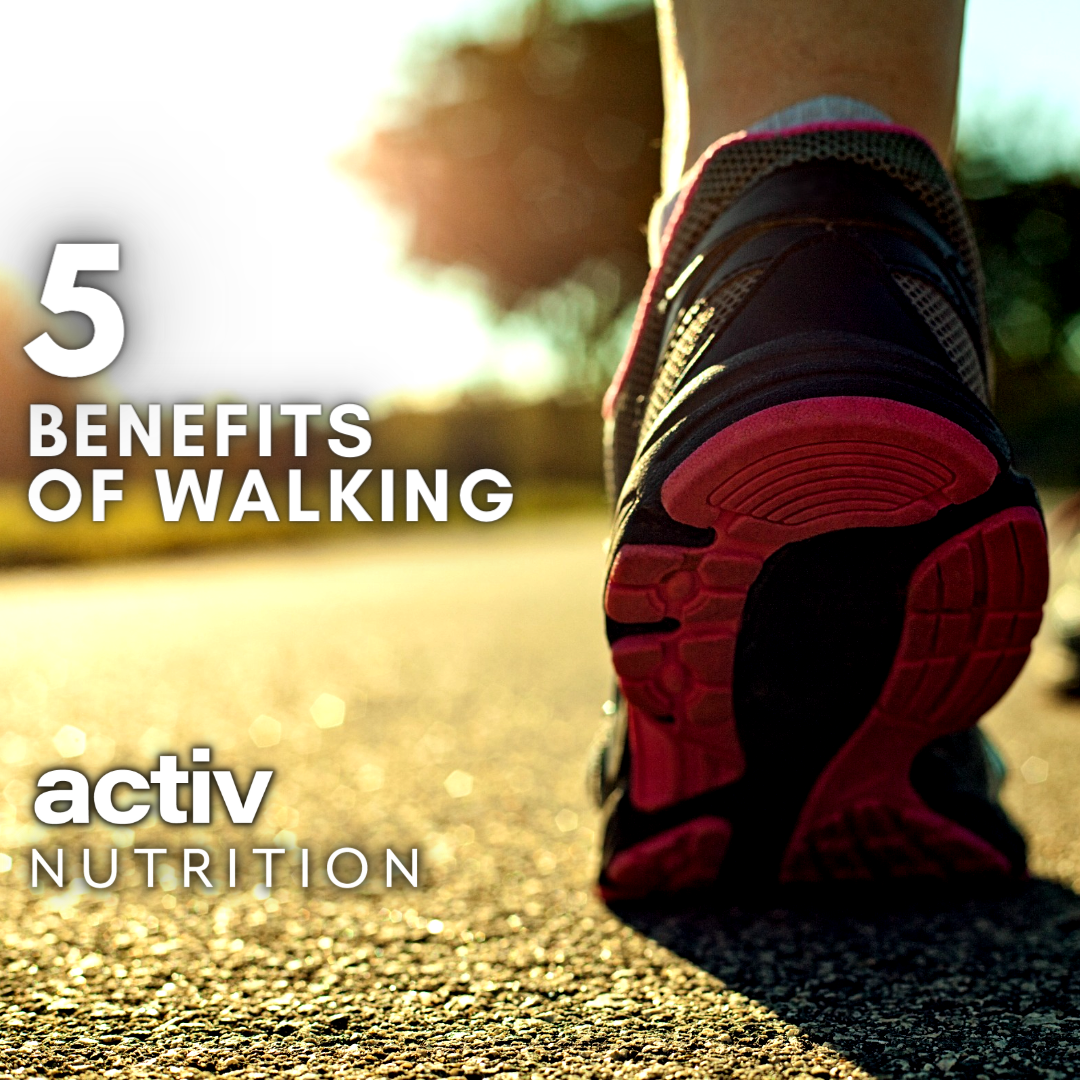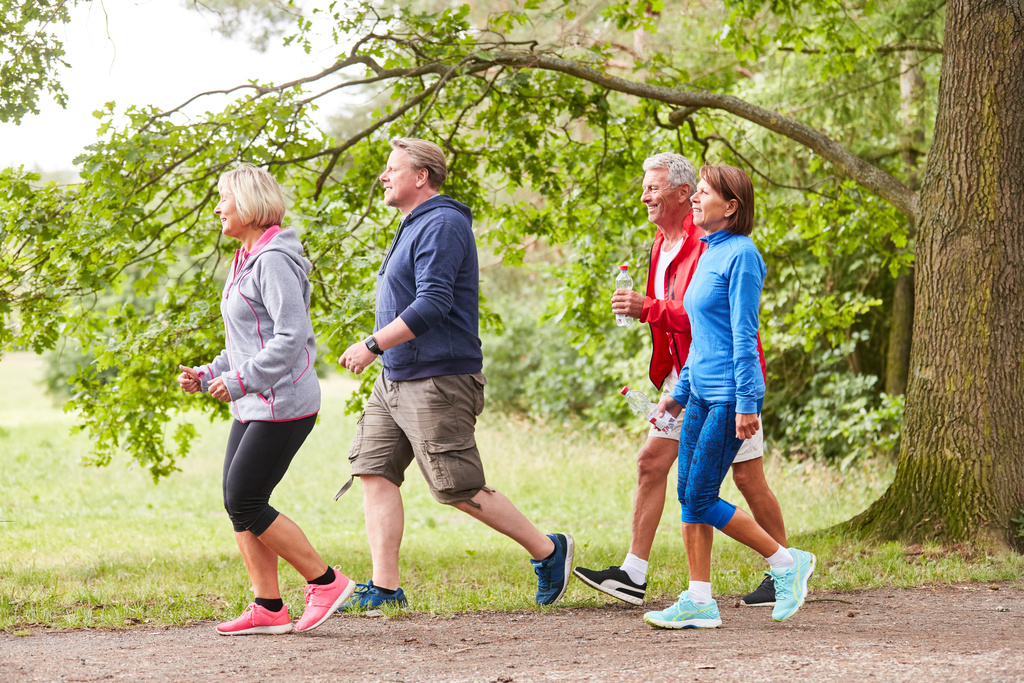5 Benefits Of Walking – Activ Nutrition
16/11/2022Walking may be your solution if you’ve been looking for a way to get moving and keep healthy. In this article, we’ll explore the benefits of walking, how much activity you need to be healthy, and ways you can start implementing this into your weekly schedule.
Our busy schedules give us little time to be active. Deadlines, meetings, social obligations, and binge-watching series often keep us routed to our chairs and can lead to unwanted results. Coupled with a poor diet, lack of exercise can put you at risk of lifestyle diseases such as high blood pressure, type 2 Diabetes, and other heart illnesses.
Getting 30 minutes of walking five days a week is enough to curb those unwanted conditions while keeping the weight off your body. Before exercising, consult a health professional, especially if you have chronic illnesses or any deficiencies in your body. You can consider whey and creatine to get more results out of your exercises if you so wish.
Here are five benefits of walking:
Improved Health
Walking lowers your risk of stroke by 35%, type 2 Diabetes by 30%, and reduces your risk for coronary heart disease by 19%. Walking helps you to regulate your blood sugar and blood pressure levels. Frequent walkers are less likely to get a cold, and those who do, experience milder symptoms. Together with an immune booster, walking as an exercise can prevent you from getting colds.
Lowered Risk of Bone Disease
Regular walks ensure that you load your bones and joints just enough that they are stimulated to regenerate and strengthen without the added impact that comes with running. Walking builds and conditions the muscles of the legs and back, preventing back pain and decreasing strain on your body.
Strengthened Joints
Walking stimulates the creation and movement of synovial fluid in the joints of the hips, knees, and ankles. Walking also strengthens the muscles responsible for supporting your joints. If you have osteoarthritis, walking can improve your pain levels. Consider using a collagen supplement rich in amino acids in conjunction with walking to ensure you load the joint adequately while keeping the joint healthy.
Improved Mental Performance
Have you ever taken a walk to ‘clear your mind’? Removing yourself from a complex task and giving your brain a chance to digest information is often the solution to many problems. Walking increases your respiratory rate, meaning you get more oxygen to the brain. This, coupled with seeing a new environment, gives you a new perspective on your problem. If you really struggle to clear your mind, consider tea containing magnesium before going on a slower, more relaxing walk.
It’s a Great Social Activity
Walking clubs are a safer alternative to walking alone, and you can catch up with friends and family. Going for a walk is a great way to remove all distractions and focus on being present and engaging with whomever you’re with.
It must be mentioned that walking may be the better option for people who are obese or have back pain or any illness. Jogging and running have benefits over walking, but walking has numerous merits. Walking is a simple task that requires very little skill. All you need is a decent pair of trainers, some comfortable clothes, and a route where you will be walking. If you’re new to walking, consider inviting your friends so that it feels less like exercise and more like an activity you’re doing with familiar faces.
Walking as an exercise can be progressed in three ways:
-
Walking speed – Increasing walking speed will lead you to burn more calories. If you’re pain-free and feeling brave, you can try jogging for a minute toward the end of your walk.
-
Terrain – Your muscles will be challenged more if you walk on various surfaces and inclines. Walking up and down hills will put more stress on your muscles than walking on a flat surface. Take note that walking downhill also puts a different type of strain on your muscles. Your muscles are forced to work eccentrically to control your descent.
-
Distance – Increasing your distance means you’ll be able to build up your muscular and cardiovascular endurance.
Fitting walking into your schedule
If you struggle to fit walking into your schedule, you can modify your daily activities to prioritize walking. Frequent breaks from your desk and opting to take the stairs instead of the lift are excellent ways to fit exercise into your daily schedule. Where possible, opt to walk to work a few times a week. Another tip would be to take the metrics out of the activity. Walking 30 minutes daily and focusing on step counter readings can bring anxiety if the targets aren’t met. Removing targets may make the activity more enjoyable.
Stay hydrated
If you take part in moderate walking for fitness (about 150 minutes a week), you will need to stay hydrated. Before walking, you should drink at least 500 milliliters (17 ounces) of water. For an added benefit, you can add an electrolyte supplement to your water to ensure you don’t lose essential nutrients while walking. After the walk, don’t overdo plain water. You’ll need to replenish your lost salts through an electrolyte-rich drink.
Walking is an easy option for time-strapped individuals and people who struggle to engage in daily activity. Will you consider taking up walking?



